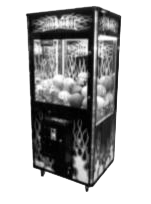CASE STUDY/PASSAGE BASED QUESTIONS from MTG GUIDE PROBABILITY for Class 12
| Class 12 | MATHS |
| Chapter | PROBABILITY |
| MTG GUIDE | CASE STUDY/PASSAGE BASED QUESTIONS |
| Medium | English |
| Academic Year | 2023-2024 |
Question 1
Three friends A, B and C are playing a dice game. The numbers rolled up by them in their first three chances were noted and given by A={1,5},B={2,4,5} and C={1,2,5} as A reaches the cell 'SKIP YOUR NEXT TURN' in second throw.
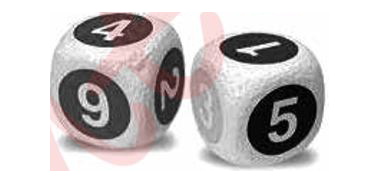
based on the above information, answer the following questions.
P(A∣B) = View SolutionQuestion 2
Three friends A, B and C are playing a dice game. The numbers rolled up by them in their first three chances were noted and given by A={1,5},B={2,4,5} and C={1,2,5} as A reaches the cell 'SKIP YOUR NEXT TURN' in second throw.
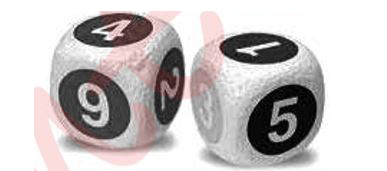
based on the above information, answer the following questions.
P(B∣C) = View SolutionQuestion 3
Three friends A, B and C are playing a dice game. The numbers rolled up by them in their first three chances were noted and given by A={1,5},B={2,4,5} and C={1,2,5} as A reaches the cell 'SKIP YOUR NEXT TURN' in second throw.

based on the above information, answer the following questions.
P(A∩B∣C)=View SolutionQuestion 4
Three friends A, B and C are playing a dice game. The numbers rolled up by them in their first three chances were noted and given by A={1,5},B={2,4,5} and C={1,2,5} as A reaches the cell 'SKIP YOUR NEXT TURN' in second throw.
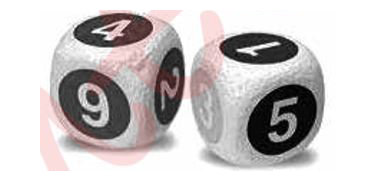
based on the above information, answer the following questions.
P(A∣C)=View SolutionQuestion 5
Three friends A, B and C are playing a dice game. The numbers rolled up by them in their first three chances were noted and given by A={1,5},B={2,4,5} and C={1,2,5} as A reaches the cell 'SKIP YOUR NEXT TURN' in second throw.
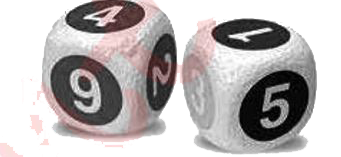
based on the above information, answer the following questions.
P(A∪B∣C)=View SolutionQuestion 6
In a play zone, Astha, is playing crane game. It has 12 blue balls, 8 red balls, 10 yellow balls and 5 green balls. If Astha draws two balls one after the other without replacement, then answer the following questions.
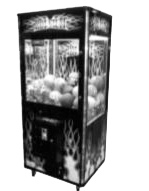
What is the probability that the first is blue and the second ball green ?View SolutionQuestion 7
In a play zone, Astha, is playing crane game. It has 12 blue balls, 8 red balls, 10 yellow balls and 5 green balls. If Astha draws two balls one after the other without replacement, then answer the following questions.
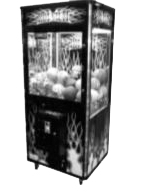
What is the probability that the first ball is yellow and the second ball is red ?View SolutionQuestion 9
In a play zone, Astha, is playing crane game. It has 12 blue balls, 8 red balls, 10 yellow balls and 5 green balls. If Astha draws two balls one after the other without replacement, then answer the following questions.
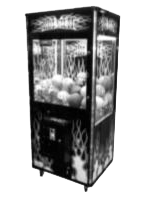
What is the probability that the first ball is green and the second ball is not yellow ?View SolutionQuestion 10
In a play zone, Astha, is playing crane game. It has 12 blue balls, 8 red balls, 10 yellow balls and 5 green balls. If Astha draws two balls one after the other without replacement, then answer the following questions.
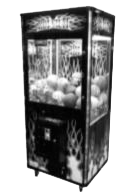
What is the probability that both the balls are not blue ?View SolutionQuestion 11
Ajay enrolled himself in an online practice test portal provided by his school for better practice. Out of 5 questions in a set-I, he was able to solve 4 of them and got stuck in the one which is as shown below.
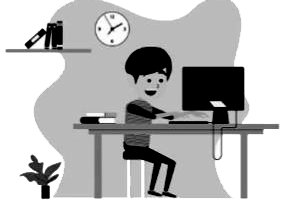
If A and B are independent events, P(A)=0.6 and P(B)=0.8, then answer the following questions.
P(A∩B)=View SolutionQuestion 12
Ajay enrolled himself in an online practice test portal provided by his school for better practice. Out of 5 questions in a set-I, he was able to solve 4 of them and got stuck in the one which is as shown below.
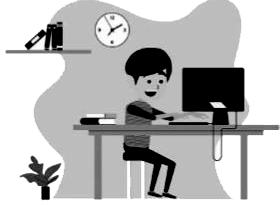
If A and B are independent events, P(A)=0.6 and P(B)=0.8, then answer the folloqing questions.
P(A∪B)=View SolutionQuestion 13
Ajay enrolled himself in an online practice test portal provided by his school for better practice. Out of 5 questions in a set-I, he was able to solve 4 of them and got stuck in the one which is as shown below.
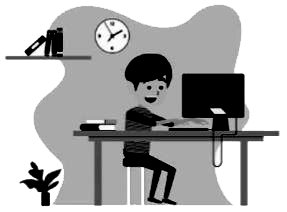
If A and B are independent events, P(A)=0.6 and P(B)=0.8, then answer the following questions.
P(B∣A)=View SolutionQuestion 14
Ajay enrolled himself in an online practice test portal provided by his school for better practice. Out of 5 questions in a set-I, he was able to solve 4 of them and got stuck in the one which is as shown below.
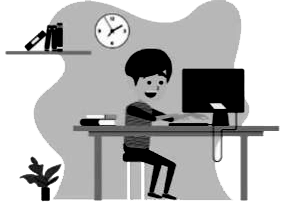
If A and B are independent events, P(A)=0.6 and P(B)=0.8, then answer the following questions.
P(A∣B)=View SolutionQuestion 15
Ajay enrolled himself in an online practice test portal provided by his school for better practice. Out of 5 questions in a set-I, he was able to solve 4 of them and got stuck in the one which is as shown below.
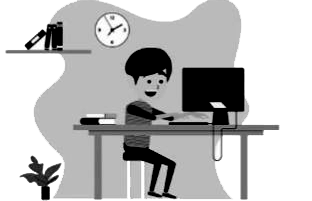
If A and B are independent events, P(A)=0.6 and P(B)=0.8, then answer the following questions.
P (not A and not B) = View SolutionQuestion 16
A doctor is to visit a patient. From the past experience, it is known that the probabilities that the he will come by cab, metro, bike or by other means of transport are respectively 0.3, 0.2, 0.1 and 0.4. The probabilities that the he will be late are 0.25, 0.3, 0.35 and 0.1 if he vomes by cab, metro,bike and other means of transport respectively.

Based on the above information, answer the following questions.
When the doctor arrives late, what is the probability that he comes by metro ?View SolutionQuestion 17
A doctor is to visit a patient. From the past experience, it is known that the probabilities that the he will come by cab, metro, bike or by other means of transport are respectively 0.3, 0.2, 0.1 and 0.4. The probabilities that the he will be late are 0.25, 0.3, 0.35 and 0.1 if he vomes by cab, metro,bike and other means of transport respectively.
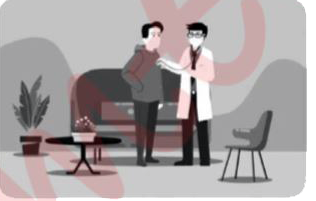
Based on the above information, answer the following questions.
When the doctor arrives late, what is the probability that he comes by cab ?View SolutionQuestion 18
A doctor is to visit a patient. From the past experience, it is known that the probabilities that the he will come by cab, metro, bike or by other means of transport are respectively 0.3, 0.2, 0.1 and 0.4. The probabilities that the he will be late are 0.25, 0.3, 0.35 and 0.1 if he vomes by cab, metro,bike and other means of transport respectively.
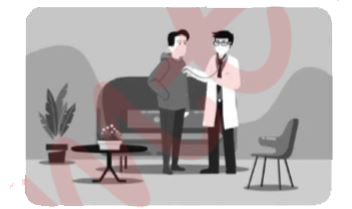
Based on the above information, answer the following questions.
When the doctor arrives late, what is the probability that he comes by bike ?View SolutionQuestion 19
A doctor is to visit a patient. From the past experience, it is known that the probabilities that the he will come by cab, metro, bike or by other means of transport are respectively 0.3, 0.2, 0.1 and 0.4. The probabilities that the he will be late are 0.25, 0.3, 0.35 and 0.1 if he vomes by cab, metro,bike and other means of transport respectively.
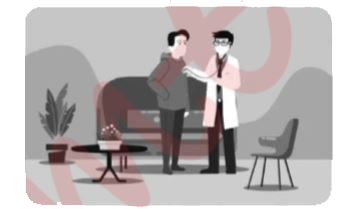
Based on the above information, answer the following questions.
When the doctor arrives late, what is the probability that he comes by other means of transport ?View SolutionQuestion 20
A doctor is to visit a patient. From the past experience, it is known that the probabilities that the he will come by cab, metro, bike or by other means of transport are respectively 0.3, 0.2, 0.1 and 0.4. The probabilities that the he will be late are 0.25, 0.3, 0.35 and 0.1 if he vomes by cab, metro,bike and other means of transport respectively.
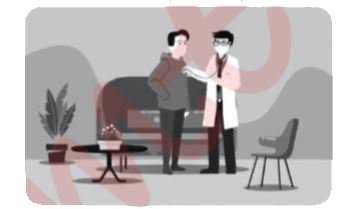
Based on the above information, answer the following questions.
What is the probability that the doctor is late by any means ?View SolutionQuestion 21
Suman was doing a project on a school survey, on the average number of hours spent on study by students selected at random. At the end of survey, Suman prepared the following report related to the data.
Let X denotes the average number of hours spent on study by students. The probability that X and can take the values x, has the following form, where k is some unknown constant.
P(X=x)=⎧⎪ ⎪ ⎪ ⎪⎨⎪ ⎪ ⎪ ⎪⎩0.2, if x = 0kx, if x = 1 or 2k (6-x), if x = 3 or 40, otherwise

Based on the above information, answer the following questions.
Find the value of k.View SolutionQuestion 22
Suman was doing a project on a school survey, on the average number of hours spent on study by students selected at random. At the end of survey, Suman prepared the following report related to the data.
Let X denotes the average number of hours spent on study by students. The probability that X and can take the values x, has the following form, where k is some unknown constant.
P(X=x)=⎧⎪ ⎪ ⎪ ⎪⎨⎪ ⎪ ⎪ ⎪⎩0.2, if x = 0kx, if x = 1 or 2k (6-x), if x = 3 or 40, otherwise
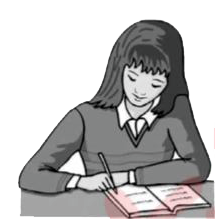
Based on the above information, answer the following questions.
What is the probability that the average study time of students is at least 3 hours ?View SolutionQuestion 23
Suman was doing a project on a school survey, on the average number of hours spent on study by students selected at random. At the end of survey, Suman prepared the following report related to the data.
Let X denotes the average number of hours spent on study by students. The probability that X and can take the values x, has the following form, where k is some unknown constant.
P(X=x)=⎧⎪ ⎪ ⎪ ⎪⎨⎪ ⎪ ⎪ ⎪⎩0.2, if x = 0kx, if x = 1 or 2k (6-x), if x = 3 or 40, otherwise

Based on the above information, answer the following questions.
What is the probability that the average study time of students is at least 3 hours ?View SolutionQuestion 24
Suman was doing a project on a school survey, on the average number of hours spent on study by students selected at random. At the end of survey, Suman prepared the following report related to the data.
Let X denotes the average number of hours spent on study by students. The probability that X and can take the values x, has the following form, where k is some unknown constant.
P(X=x)=⎧⎪ ⎪ ⎪ ⎪⎨⎪ ⎪ ⎪ ⎪⎩0.2, if x = 0kx, if x = 1 or 2k (6-x), if x = 3 or 40, otherwise

Based on the above information, answer the following questions.
What is the probability that the average study time of students is exactly 2 hours ?View SolutionQuestion 25
Suman was doing a project on a school survey, on the average number of hours spent on study by students selected at random. At the end of survey, Suman prepared the following report related to the data.
Let X denotes the average number of hours spent on study by students. The probability that X and can take the values x, has the following form, where k is some unknown constant.
P(X=x)=⎧⎪ ⎪ ⎪ ⎪⎨⎪ ⎪ ⎪ ⎪⎩0.2, if x = 0kx, if x = 1 or 2k (6-x), if x = 3 or 40, otherwise

Based on the above information, answer the following questions.
What is the probability that the average study time of students is at least 1 hour ?View SolutionQuestion 26
On a holiday, a father gave a puzzle from a newspaper to his son Ravi and his daughter Priya. The probabiliy of solving this specific puzzle independent by Ravi and Priya are 14 and 15 respectively.

Based on the above information, answer the following questions.
The chance that both Ravi and Priya solved the Puzzle, is View Solution

